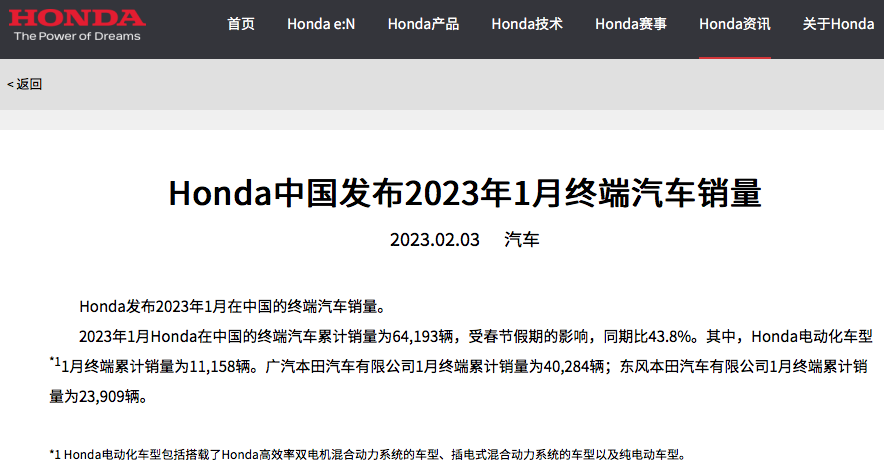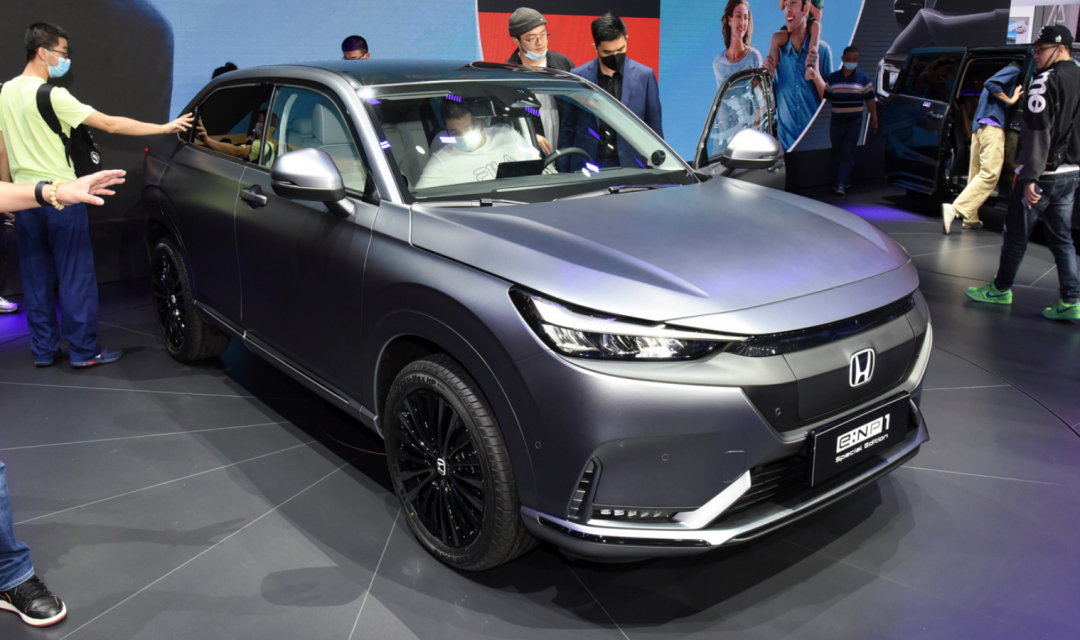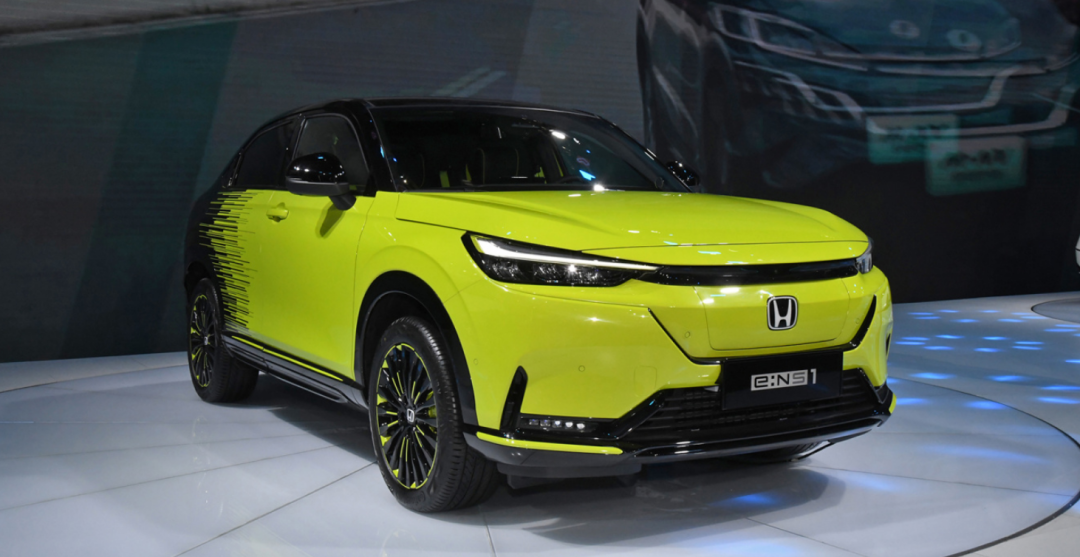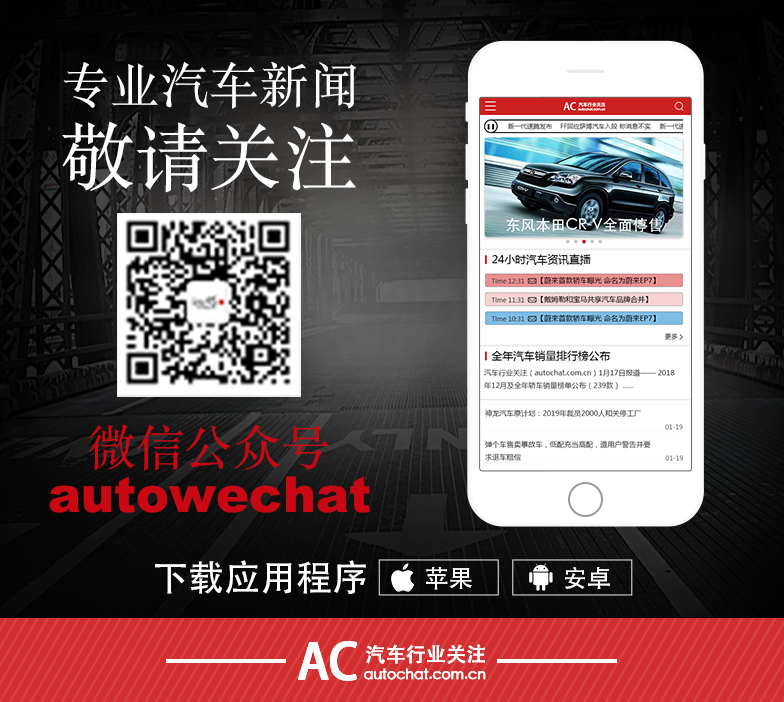In addition to Weibo, there is also WeChat
Please pay attention

WeChat public account
AutoBeta


2024-11-21 Update From: AutoBeta autobeta NAV: AutoBeta > News >
Share
AutoBeta(AutoBeta.net)02/03 Report--
On February 3, Honda China released terminal car sales in January 2023. Data show that Honda's cumulative sales of terminal vehicles in China in January 2023 were 64193, down 56.22% from the same period last year and 53.65% from the previous month, of which Honda China sold 11158 electric vehicles. Among the subdivided brands, Guangzhou Auto Honda sold 40284 vehicles, down 49.63% from the same period last year, while Dongfeng Honda sold 23909 vehicles, 64.14% year-on-year.

According to Automotive Industry concern, this is the fifth consecutive month of year-on-year decline in Honda China. Data show that Honda China fell 16.8 per cent (101100 vehicles), 28.5 per cent (106100 vehicles), 42.8 per cent (78100 vehicles) and 17.88 per cent (138500 vehicles) from September to December 2022, respectively, with the highest decline in January 2023, down 56.22 per cent from a year earlier. On the face of it, the decline in Honda's sales in China in January was affected by the traditional Chinese New year holiday, but in fact, the deeper reason behind the decline is the "electrification" that is taking place in the entire auto industry. With the emergence of more electric cars and the rapid rise of domestic independent brands, the market share of Japanese car companies that once created sales myths has been gradually divided, while Honda's main sales products in China are still fuel vehicles.
2022 can be said to be the product year of Honda. In the Chinese market, Honda's two joint venture brands, Guangzhou Automobile Honda and Dongfeng Honda, have launched a lot of new cars and renovated a number of major models at the same time. However, Honda's sales in China are still unable to get rid of the situation of "year-on-year decline". Honda's cumulative sales in China in 2022 were 1.3731 million vehicles, down 12.1% from the same period last year. This is the second year in a row that Honda China has experienced a year-on-year decline and the decline continues to expand. Among the subdivided brands, GAC Honda sold 720700 vehicles, down 6.19 per cent from the same period last year, while Dongfeng Honda sold 652400 vehicles, down 17.76 per cent from the same period last year.

In addition to the well-known environmental factors, the decline in sales is also related to the poor market competitiveness of Honda's main products and the slow transformation of electrification.
In 2022, two Honda joint venture brands in China launched e:NS1 and e:NP1 electric products in one fell swoop. Dongfeng Honda e:NS1 was officially launched on April 26, 2022, and Guangzhou Auto Honda e:NP1 1 was officially launched on June 20, 2022. The subsidized price range of both models is 17.5-218000 yuan, but failed to stir up new waves in the market after listing. According to the data of New car Traffic Insurance, the cumulative sales of e:NS1 and e:NP1 in 2022 are 4613 and 3008, respectively, with an average monthly sales of only 500.


In order to reverse the decline in sales and promote the process of electrification, Honda China began to seek change after 2023. On January 30th, Honda China issued three announcements to make significant adjustments to the organizational structure and internal personnel of Honda. Among them, Honda Technology Research Technology (China) Co., Ltd. (HMCT), a wholly owned subsidiary of Honda China, will merge with Honda production Technology (China) Co., Ltd. (EGCH). HMCT will survive after the merger, and the main business of EGCH will be undertaken by Honda Technology (China) Co., Ltd. Guangzhou Branch of Manufacturing Technology. At the same time, in order to strengthen the development and implementation of the electrification strategy in various regions, Honda has integrated its six major markets into three major markets: China, North America and the integrated region. the integrated region includes Japan, Asia and Oceania, South America, Europe and Africa, and the Middle East. In addition, starting from April 1 this year, the current Honda China Minister Shengshi Inoue has stepped down as Honda Executive Officer and Electric Development Minister. After stepping down, Inoue Shunshi will be replaced by Igarashi Fumihiko Yashi, Honda Executive Service member and Minister of Asia and Oceania.

In fact, Honda's unsatisfactory sales in China is only a microcosm of the overall status quo of Japanese car companies. Sales of Toyota, Nissan and Mazda all declined to varying degrees in 2022 compared with the same period last year. Sales of Japanese cars in China in 2022 were 4.092 million, down 10.3 per cent from a year earlier, while market share fell below 20 per cent, down 2.7 per cent from a year earlier, according to the Federation of passengers. Although a number of Japanese car companies attributed the decline in sales to fluctuations in the epidemic and tight supply of spare parts, the relative lag of electrified transformation is the main reason.
At present, Japanese car companies are actively laying out the electrified transformation. In order to speed up the electrification transformation, on January 26, Toyota made a major personnel adjustment after a lapse of 14 years. Akio Toyoda, the third generation of Toyota who led Toyota for 13 years, stepped down as president from April 1 this year. At the same time, Sato, chief brand officer and head of the Lexus brand, was appointed to take over the post of new president. Prior to this, Nissan announced that it would achieve the goal of accounting for more than 40% of total vehicle sales in China by fiscal year 2026. In the spring of 2023, Dongfeng Nissan will launch four new electric drive products, including the standard life version of Ariya, the flagship all-around electric car, and a new generation of Qijun e-POWER. Mazda said that it will invest 1.5 trillion yuan to speed up the electrification process by 2030 and launch its own pure tram in the Chinese market between 2025 and 2027. Honda China made its debut at the fifth China International Import Expo on November 5, 2022, when it unveiled e:N2 Concept, the second mass-production concept car of the eRev N brand, and announced that it would launch 10 pure electric models within five years. At the press conference, Honda CEO Minhong stressed that Honda will "further expand the EVV N product matrix and launch 10 pure electric vehicles one after another by 2027", when it will "upgrade a new transformation to a pure electric brand."

It can be seen that after entering 2023, both Honda and Toyota have made a gesture of "going all out" to accelerate the electrification transformation, but in the field of electric vehicles, it is still difficult for Japanese car companies, which started very slowly before, to catch up with domestic mainstream new energy brands. It is impossible to predict what will happen to the "electric transformation" of Japanese car companies in 2023, but it can be predicted that with the increasingly fierce competition in the global new energy market, especially in the Chinese market, Japanese car companies may not be easy in the future if there are no imminent changes.
Welcome to subscribe to the WeChat public account "Automotive Industry Focus" to get the first-hand insider information on the automotive industry and talk about things in the automotive circle. Welcome to break the news! WeChat ID autoWechat
Views: 0
*The comments in the above article only represent the author's personal views and do not represent the views and positions of this website. If you have more insights, please feel free to contribute and share.











© 2024 AutoBeta.Net Tiger Media Company. All rights reserved.